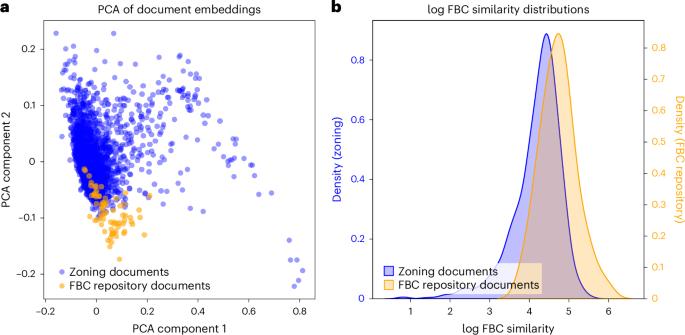An AI-based analysis of zoning reforms in US cities
引用次数: 0
Abstract
Cities are at the forefront of addressing global sustainability challenges, particularly those exacerbated by climate change. Traditional zoning codes, which often segregate land uses, have been linked to increased vehicular dependence, urban sprawl and social disconnection, undermining broader social and environmental sustainability objectives. This study investigates the adoption and impact of form-based codes (FBCs), which aim to promote sustainable, compact and mixed-use urban forms as a solution to these issues. Using natural language processing techniques, we analyzed zoning documents from over 2,000 United States census-designated places to identify linguistic patterns indicative of FBC principles. Our findings reveal widespread adoption of FBCs across the country, with notable variations within regions. FBCs are associated with higher floor to area ratios, narrower and more consistent street setbacks and smaller plots. We also find that places with FBCs have improved walkability, shorter commutes and a higher share of multifamily housing. Our findings highlight the utility of natural language processing for evaluating zoning codes and underscore the potential benefits of form-based zoning reforms for enhancing urban sustainability. Zoning reform has become a widespread push across US cities to improve social and environmental sustainability, but it has been difficult to quantify the implications of adoption of new codes. Using natural language processing to analyze a large body of zoning documents, Salazar-Miranda and Talen find that form-based codes exhibit clear themes connected to sustainability outcomes.

基于人工智能的美国城市分区改革分析
城市处于应对全球可持续性挑战的最前沿,尤其是那些因气候变化而加剧的挑战。传统的分区法规往往将土地用途隔离开来,与日益增加的车辆依赖、城市蔓延和社会脱节有关,破坏了更广泛的社会和环境可持续性目标。本研究调查了基于形式的规范(fbc)的采用及其影响,其目的是促进可持续、紧凑和混合用途的城市形式作为解决这些问题的方法。使用自然语言处理技术,我们分析了来自2000多个美国人口普查指定地点的分区文件,以确定指示FBC原则的语言模式。我们的研究结果显示,全国各地广泛采用了fbc,各地区之间存在显著差异。fbc与更高的容积率、更窄、更一致的街道挫折和更小的地块有关。我们还发现,有fbc的地方步行能力更好,通勤时间更短,多户住宅的比例更高。我们的研究结果强调了自然语言处理在评估分区代码方面的效用,并强调了基于形式的分区改革对提高城市可持续性的潜在好处。分区改革已成为美国各城市提高社会和环境可持续性的广泛推动力,但很难量化采用新法规的影响。Salazar-Miranda和Talen使用自然语言处理来分析大量的分区文件,发现基于形式的代码显示出与可持续性结果相关的明确主题。
本文章由计算机程序翻译,如有差异,请以英文原文为准。
求助全文
约1分钟内获得全文
求助全文

 求助内容:
求助内容: 应助结果提醒方式:
应助结果提醒方式:


